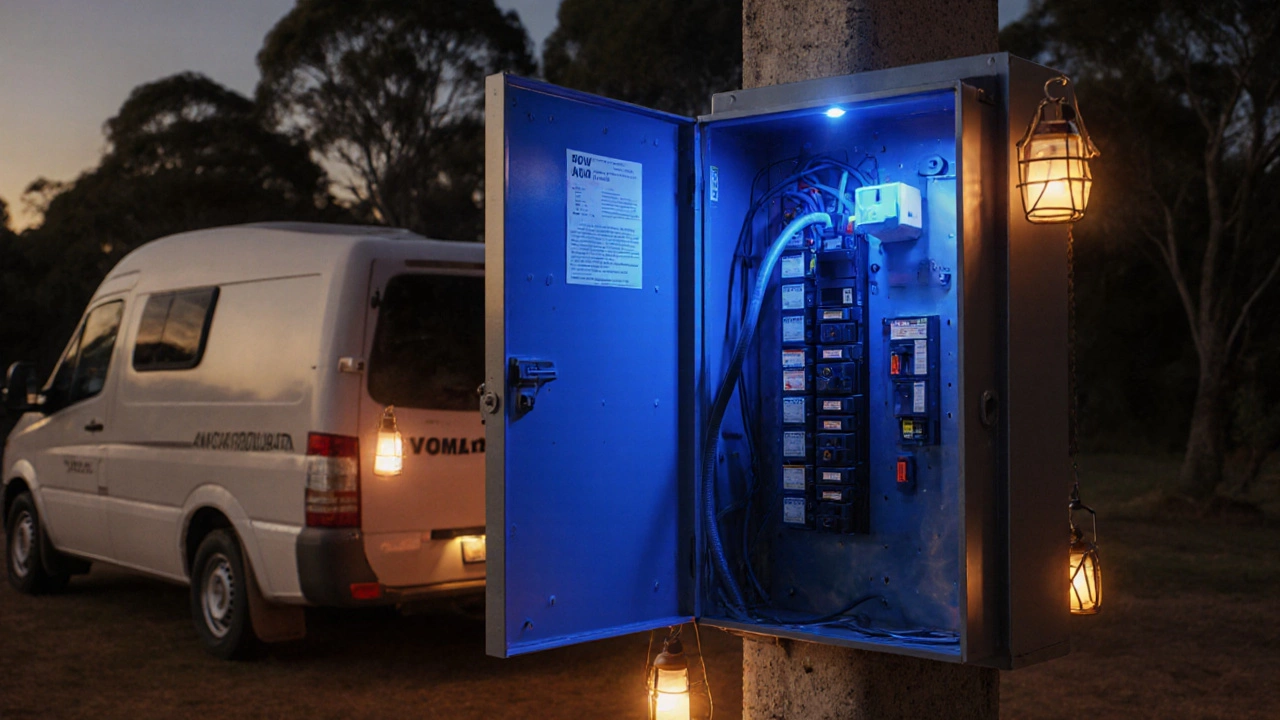Campsite Electrical System – Powering Your Motorhome Stay
When working with campsite electrical system, the network of power sources, wiring, and outlets that lets you run lights, appliances, and gadgets while you’re parked at a site. Also known as campsite power setup, it covers everything from a simple 12‑volt fridge to a full‑size inverter that runs a laptop, TV, and even a coffee maker. Knowing how the pieces fit together means you won’t end up with a dead battery in the middle of a rainstorm or a noisy generator that scares off the kids. Understanding a campsite electrical system helps you avoid those headaches before they happen.
Key Components of a Reliable Campsite Electrical System
One of the first building blocks is solar panels, portable or roof‑mounted devices that turn sunlight into usable electricity. When the sun’s out, they feed power straight into a battery bank, a collection of deep‑cycle batteries that store energy for cloudy evenings and early mornings. Together they let you run low‑draw items like LED lights, USB chargers, and a 12‑volt water pump without ever touching a fuel‑burning generator. The system also includes an inverter, a device that converts 12 V DC into 230 V AC so you can plug in a TV, laptop, or electric kettle. If you’re staying at a site with shore power, a simple transfer switch can route that grid electricity straight into your battery bank, keeping the batteries topped up while you use any AC appliance you like.
When sunlight is scarce or you need a burst of power, a generator, a gasoline or diesel engine that creates electricity on demand becomes the backup hero. Modern portable generators are quieter and more fuel‑efficient, but they still need proper ventilation and safe placement away from the motorhome. Pairing a generator with an automatic charging controller means the batteries only charge when they’re low, extending their life and saving fuel. You’ll also find a 12‑volt distribution panel that houses fuses and circuit breakers for each circuit—lights, water pump, fridge, and any 12‑V accessories. This panel is the safety hub that prevents overloads and protects your wiring, especially when you’re running several devices at once.
Finally, think about how you’ll actually use the power. A 12‑volt TV, a small fridge, and LED strips are low‑draw, so a modest solar‑plus‑battery setup will handle them easily. For high‑draw items like a microwave or electric grill, you’ll need a larger inverter and a robust battery bank, or you’ll rely on shore power or a generator for those occasional needs. Planning ahead—knowing the wattage of each device, estimating daily usage, and matching that to your solar array size, battery capacity, and generator output—keeps you from running out of juice in the middle of a binge‑watch session. The posts below dive deeper into each of these pieces, show real‑world wiring tips, and share common mistakes to avoid, so you can build a campsite electrical system that works reliably wherever you park.
-
 VIEW POST
VIEW POSTHow Does Electricity Work at Campsites? A Practical Guide
Oct, 8 2025|0 CommentsLearn how campsite electricity works, from grid hookups and amperage to generators, solar backups, safety tips, and load management for a hassle‑free camping stay.